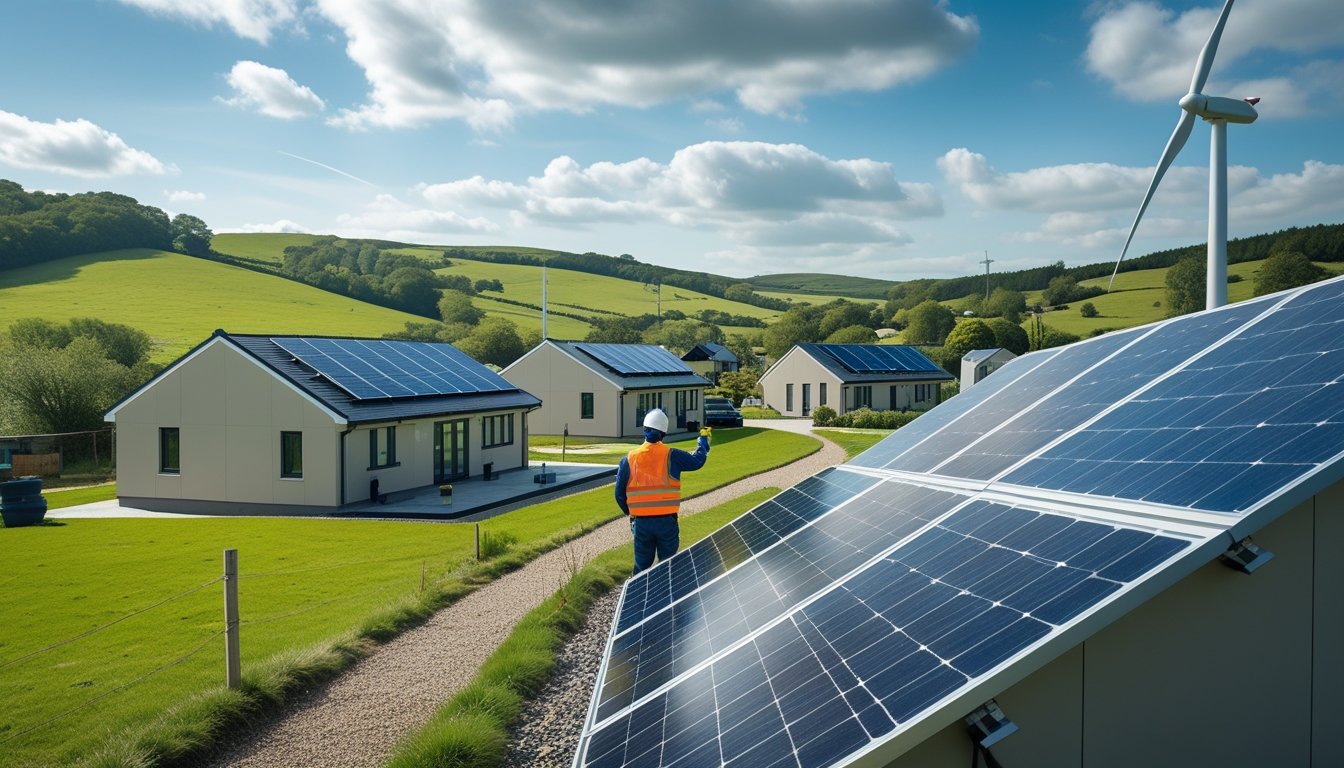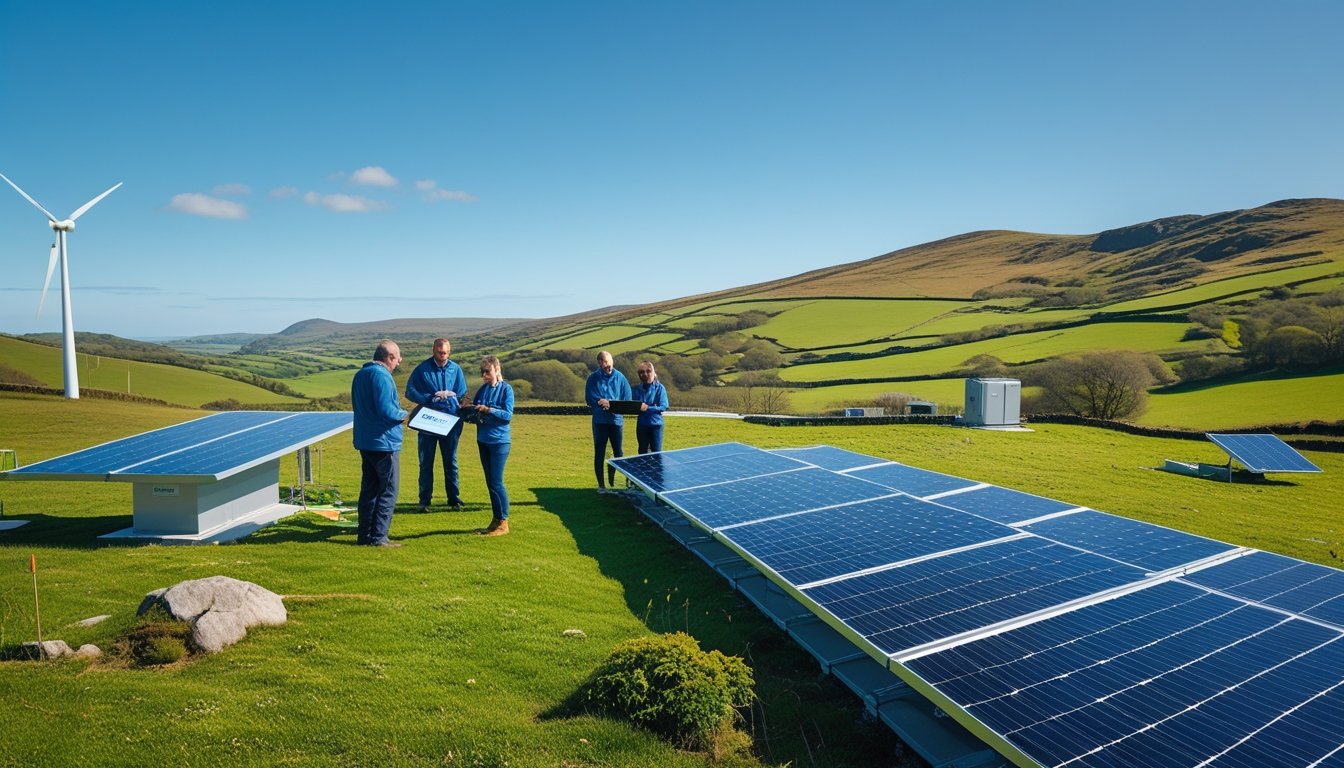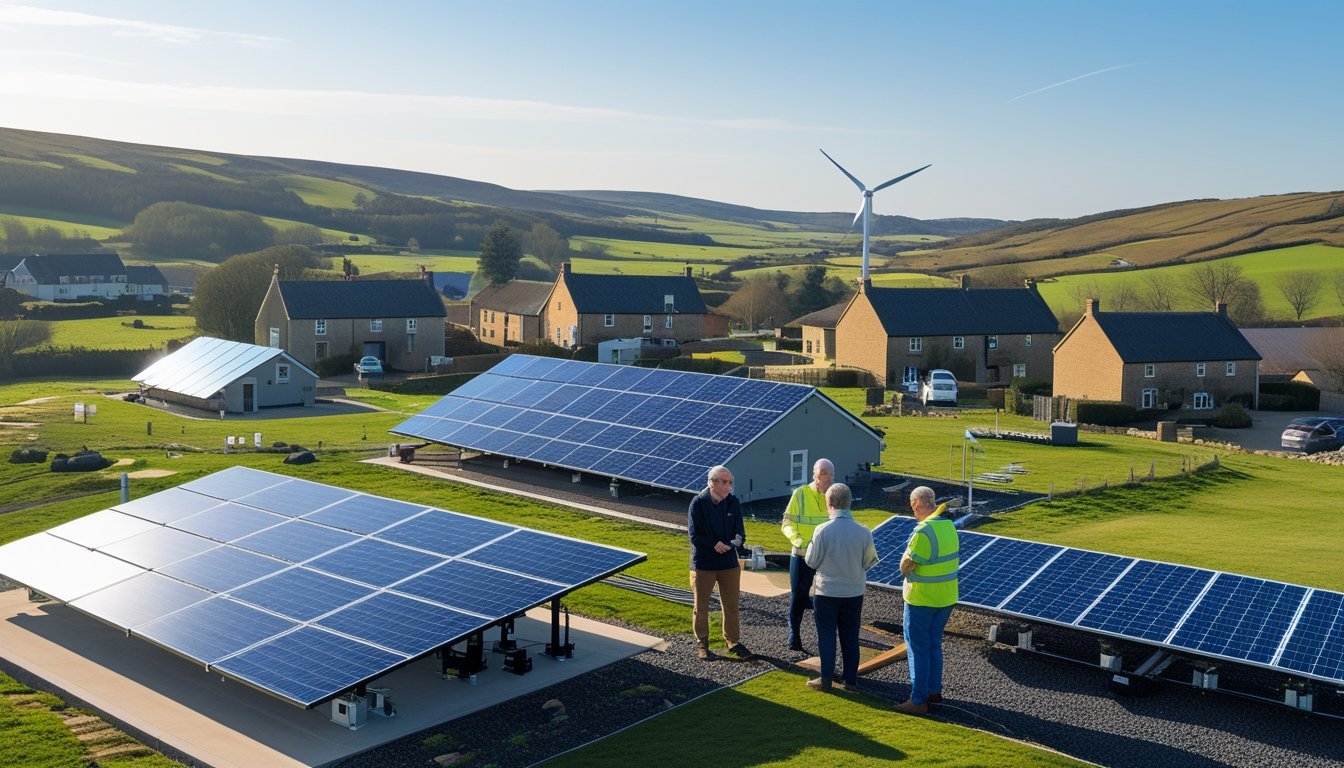Late updated: 14 Oct 2025 09:10
Written by: Oliver Bennett
Efficient Energy Solutions For Remote UK Communities: Empowering Sustainability
The shift towards efficient energy solutions is becoming more critical, particularly for remote UK communities. Our focus is on empowering these areas with innovative technologies like microgrids and hybrid energy systems, which promise a transformative impact. As we explore various strategies, from the deployment of wind turbines and solar panels to the design of bespoke hydroelectric projects, our commitment to clean energy solutions grows stronger.

Rural areas often grapple with unique challenges, such as outdated infrastructure and isolation from centralised energy networks. This necessitates locally tailored solutions that ensure reliability and sustainability. By addressing these issues head-on, we can significantly boost economic growth and improve the quality of life in these communities.
Collectively, these efforts contribute to a broader goal of reducing carbon emissions and promoting energy independence. We aim to showcase how adopting these resources not only meets current energy demands but also paves the way for a sustainable future.
Key Takeaways
- Efficient energy solutions are vital for remote UK communities.
- Local solutions enhance reliability and promote sustainability.
- Clean energy adoption fosters economic growth and independence.
Core Efficient Energy Solutions for Remote UK Communities
Our focus is on addressing the energy needs of remote UK communities through sustainable and innovative solutions. This involves utilising renewable energy sources, enhancing energy management and storage, and leveraging localised power generation to minimise reliance on fossil fuels.
Renewable Energy Technologies for Rural Areas
Wind and solar energy are essential in providing clean energy for rural homes and businesses. Wind turbines efficiently harness the frequent winds in many rural UK areas, while solar panels are increasingly cost-effective and easy to install, capturing solar energy even in regions with less sunlight.
Implementing biomass energy from agricultural waste can also offer a viable alternative, reducing the environmental impact and contributing to local energy independence. Community-led initiatives often involve residents in developing and maintaining these technologies, fostering a sense of ownership and shared responsibility.
Smart Energy Management and Storage Innovations
Smart energy management systems play a pivotal role in optimising energy consumption. These systems can monitor and adjust energy use in real-time, ensuring that energy-efficient systems make the best use of available resources.
Battery storage is vital for managing intermittent supply from renewables, allowing excess energy to be stored and used during high demand or low generation periods. In rural areas, developing local energy storage solutions improves energy reliability and supports self-sufficiency by managing grid fluctuations and enhancing resilience.
Hydroelectric Power as a Local Solution
Hydroelectric power offers a reliable, eco-friendly energy source for rural areas with suitable water bodies. Small-scale hydroelectric projects can generate localised power with minimal environmental damage. This ensures a steady power supply while preserving local ecosystems.
Communities can operate and maintain these systems, promoting locally generated energy that reduces dependence on external suppliers. In addition, they help provide an energy-efficient and sustainable alternative to conventional energy sources. Supporting the transition from fossil fuels to renewable options contributes greatly to reducing greenhouse gas emissions and achieving energy security.
Overcoming Challenges and Driving Sustainable Development

Tackling energy-related challenges in remote UK communities paves the way for sustainable development. Efficient energy solutions improve infrastructure, elevate environmental standards, and promote the use of energy-efficient appliances in rural homes.
Improving Energy Infrastructure and Access
Remote communities often face significant barriers due to inadequate energy infrastructure. Grid extension remains a costly endeavour in these areas, prompting alternative solutions such as mini-grids and microgrids. These systems can provide stability and reliability, using local renewable resources like wind, solar, and hydroelectric power.
Installing smart meters enhances energy management by allowing consumers to monitor their consumption patterns. Such technology improves efficiency and promotes energy conservation. Public and private investments in energy storage solutions like lithium-ion batteries are pivotal, ensuring that communities maintain access to power even when local generation is not feasible.
Maximising Environmental Sustainability and Community Engagement
For sustainable development, it’s vital to ensure that energy solutions align with environmental sustainability goals. Utilising clean energy reduces carbon footprints and minimises ecological disturbances. Community engagement plays a crucial role here; involving residents in planning and decision-making fosters ownership and adoption of green practices.
Workshops and educational programmes can inform communities about sustainable energy practices, boosting participation and commitment. Projects should aim to restore natural landscapes and avoid disrupting ecosystems. Grants and incentives can encourage communities to adopt eco-friendly technologies, reinforcing their role in environmental stewardship.
Adoption of Energy-Efficient Appliances in Rural Homes
Energy-efficient appliances are essential in reducing consumption and enhancing energy security in remote areas. By implementing energy labelling schemes, we can help consumers identify and select appliances that minimise electricity use. This reduces both energy costs and greenhouse gas emissions.
Efficient heating systems, such as heat pumps, further enhance energy use in homes. Encouraging the use of LED lighting instead of traditional bulbs drastically cuts electricity use. We should promote government-sponsored incentive programmes that subsidise the purchase of energy-efficient appliances, ensuring affordability and accessibility for rural households.
Frequently Asked Questions

Implementing efficient energy solutions in remote UK communities involves understanding best practices, optimising energy storage, securing funding, overcoming connection challenges to the national grid, enhancing energy efficiency in housing, and identifying cost-effective heating solutions. Let's address these critical topics with straightforward answers.
What are the best practices for implementing renewable energy sources in isolated UK locations?
Identifying suitable renewable resources, such as wind, solar, and hydroelectric power, is essential. It helps to design systems suited to local conditions and ensures community involvement in planning and maintenance. Efficient management is achieved by integrating renewable energy sources with existing infrastructure to enhance sustainability.
How can remote UK communities optimise energy storage to ensure a consistent power supply?
Deploying advanced battery systems increases storage capacity. It allows us to store excess energy generated during peak production times. We can also use smart grid technology to manage energy distribution effectively and maintain a stable power supply, even during periods of low energy generation.
What funding options are available to support the transition to sustainable energy in remote UK regions?
Several government grants, such as the ECO4 grant, are designed to support energy efficiency improvements. Community-based projects might also benefit from local investment schemes and partnerships. It is critical that we explore national and EU funding opportunities that promote green energy initiatives.
What are the challenges in connecting remote UK communities to the national grid, and how can they be overcome?
Geographical isolation and infrastructural constraints make grid connection difficult. However, microgrids and hybrid systems offer feasible alternatives. They enable communities to manage their own energy needs. Strengthening local infrastructure and advocating for government support can help bridge the gap to the national grid.
In what ways can energy efficiency be improved in the housing stock of remote UK communities?
Retrofitting homes with high-efficiency insulation, windows, and doors minimises heat loss. Upgrading heating systems and installing smart meters enhance energy management. Community education on energy-saving practices plays a key role in reducing overall consumption, improving comfort and sustainability.
What are the most cost-effective energy solutions for providing heating and hot water in remote UK areas?
Biomass boilers, heat pumps, and solar water heaters are viable options. They offer both eco-friendliness and long-term savings. Selecting the right technology depends on local conditions, resource availability, and specific needs. Community-owned projects can also lower costs and enhance engagement.
